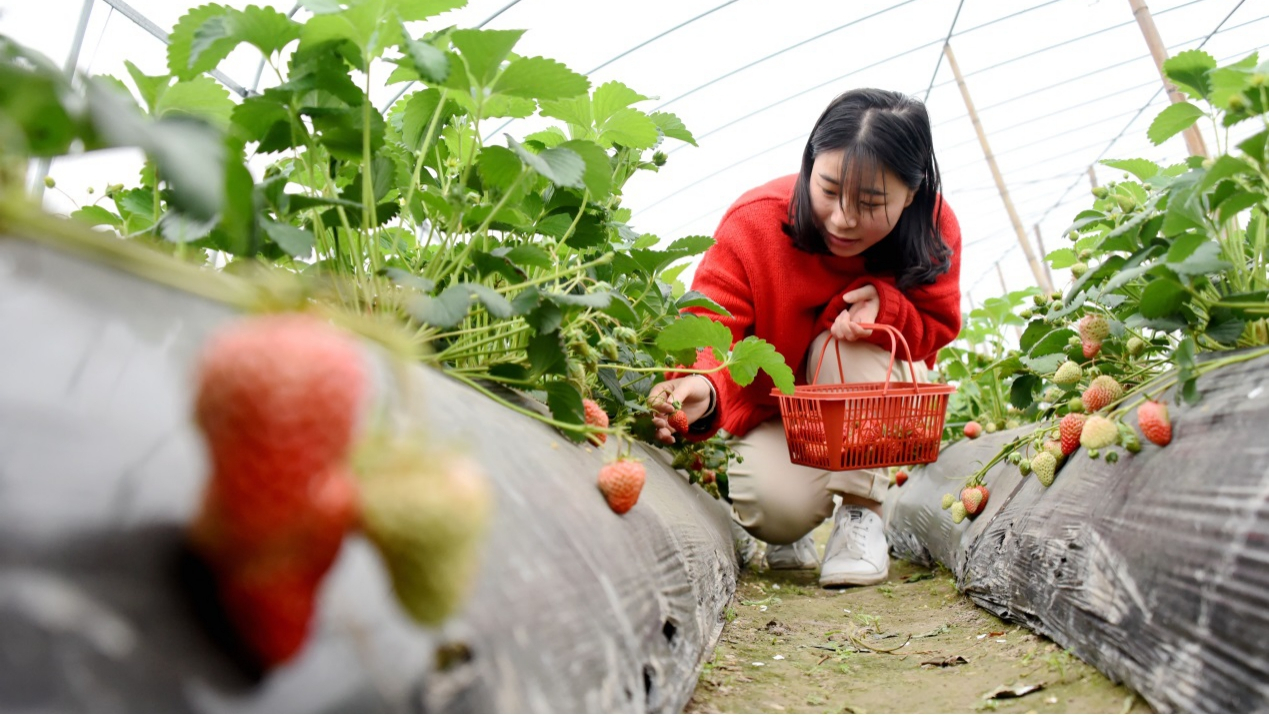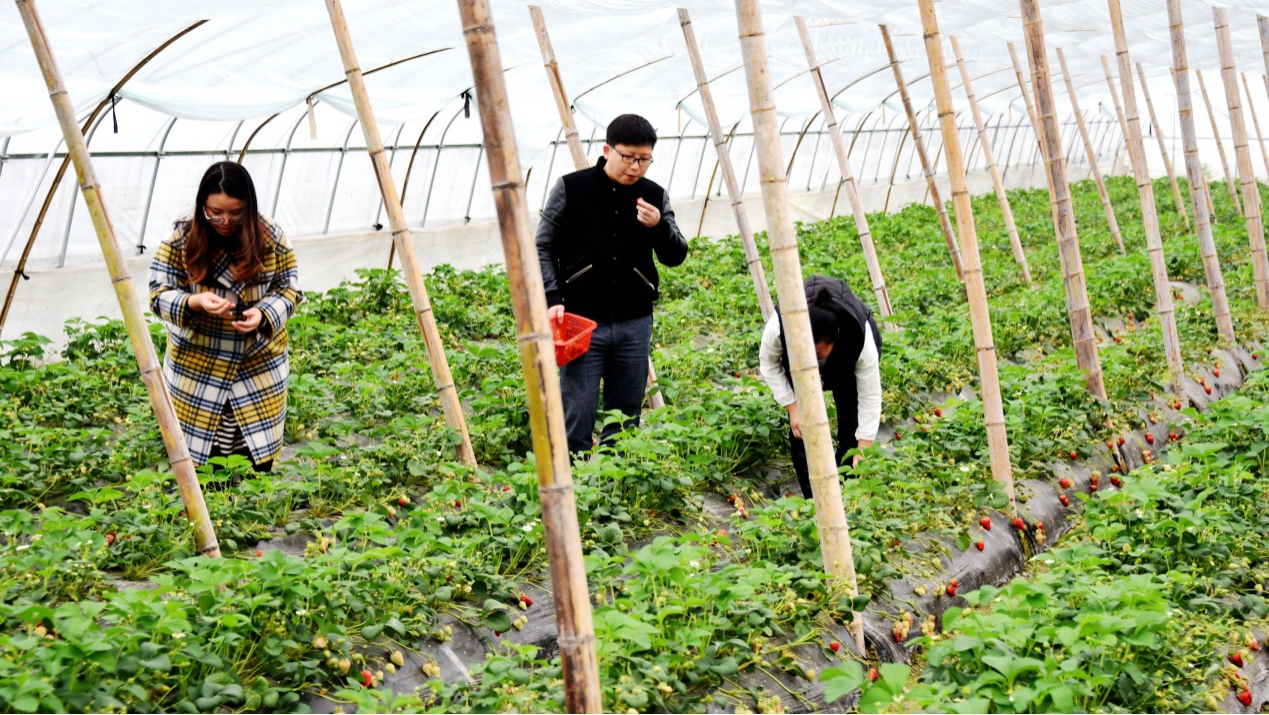
15:32, 10-Sep-2019
Highlight - Can industrial developments bring a prosperous future for China's rural areas?

Located in a hilly area in Mengzhou City of Henan Province, Yuangou Village's arable land is scattered, making scale farming impossible there. After learning greenhouse planting operation that suits the local condition, the Yuangou Village decided to build their own greenhouse planting business.
Last year, greenhouse contractors in Yuangou Village had a good harvest: strawberries, chilies and tomatoes all sold well in the market. Qin Chao, who has contracted seven greenhouses to grow strawberries, is one of them.
Every morning at 6:00, Qin Chao gets up and goes to check his strawberry greenhouses. Every time he looks at the beds of berries, which are still under construction, imagining bright red bundles of strawberries hidden behind the green leaves, he has hope and imagines the wealth.
Yuangou Village used to be a poor village in Henan. With policy support from higher levels of government, this village eliminated poverty at the end of 2017.
After shaking off poverty, the village is making strenuous efforts to realize the goal of rural vitalization. To develop industry that suits the local condition, professionals are invited to the village to share experiences on greenhouse planting operation.
With eight new greenhouses under construction, there are all together 20 greenhouses in the village. Tourists are attracted to the village to experience agricultural harvesting, thus helping to develop agricultural tourism there.

Tourists are picking strawberries in greenhouse of Qiyuan Village, Xianju County, Zhejiang Province/VCG
Tourists are picking strawberries in greenhouse of Qiyuan Village, Xianju County, Zhejiang Province/VCG
Rural vitalization is a significant strategy proposed in the keynote report at the 19th CPC National Congress. Alleviating poverty and enriching farmers are the starting points and objectives of the policy, which identifies industrial development as the fundamental solution.
What are the stages of this strategy and the goals? What are the future challenges?
To explore those questions, Closer to China sits down with Professor Zheng Fengtian, School of Agricultural Economics and Rural Development from Renmin University of China.
According to Zheng Fengtian, 14 years ago, China proposed the building of a new socialist countryside with a host of policies, like abolishing agricultural taxes and increasing agricultural input. Five years ago, China issued policies on targeted poverty alleviation, which were meant to lift over 70 million rural residents out of poverty.
Huge human, material and financial resources have been invested into rural areas under this policy. In 2017 at the 19th CPC National Congress, a broader strategy - the rural vitalization strategy - was proposed, and the goal remains the same: to reform the urban-rural dual structure of China.
The rural vitalization strategy is divided into three stages, spanning 33 years. For the first three years - from 2018 to 2020 - the CPC central committee sets up an institutional framework and policy system, also known as the "top-level designs".
Then, local governments choose some places as pilots based on local practices.
In the next 15 years, from 2020 to 2035, the goal is to make key breakthroughs with the modernization of rural areas as an indicator.
Then, from 2036 to 2050, huge efforts will be devoted to realize the goal of rural vitalization: strong agriculture; beautiful countryside; well-off farmers.
Zheng Fengtian states that China faces many difficulties in implementing the rural vitalization strategy. The main difficulty is that China prioritized the development of the city, so most of the human resources and financial resources were invested into the city, leaving rural areas empty and poor. So China needs to reform the urban-rural dual structure to enable healthy rural development.
SITEMAP
Copyright © 2018 CGTN. Beijing ICP prepared NO.16065310-3
Copyright © 2018 CGTN. Beijing ICP prepared NO.16065310-3